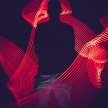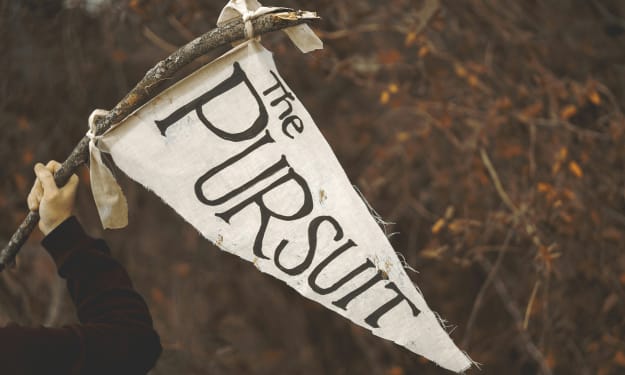The Enigma of Fear and Creepiness: Unmasking the Ambiguity Within
Fear Unveiled: Exploring the Enigmatic World of Creepiness

Fear, that primal instinct that courses through our veins, has been a faithful companion to humanity since time immemorial. It's the guardian that kept our ancestors alive in a world rife with dangers. We fear the venomous sting of insects and the hungry gaze of apex predators, and such fears make perfect sense. But what about fear when there's no clear and apparent threat, when the danger is shrouded in mystery?
Consider, for a moment, the unsettling image of a teddy bear sporting a full set of human teeth or the infamous "smile.jpg." These images stir something deep within us, something eerie and disconcerting, yet devoid of any overt peril like a loaded gun or a looming avalanche. These images are creepy, but why? What exactly triggers our sense of unease? What makes something creepy?
Let's step into my childhood bedroom, nestled in the heart of Kansas. Like many children of my era, I was thoroughly spooked by the tales of "Scary Stories to Tell in the Dark." Yet, the first book that ever truly frightened me was "The Curse of the Squirrel." To this day, I've never managed to muster the courage to finish that book.
Psychologist James Geer crafted the "Fear Survey Schedule II," a tool designed to unveil our deepest fears. Combined with the results of a recent Gallup poll, we have a comprehensive list of the things that terrify most of us. But while these fears are undeniably unsettling, do they delve into the realm of creepiness? Let's explore further.
Renowned author Stephen King beautifully dissects three distinct categories of scary phenomena. First, we have the "gross-out," which encompasses all that is repugnant, morbid, and diseased. Then there's "horror," the domain of the unnatural—the monstrous spider, the unseen hand grabbing you in the dark when you believe you're alone. Lastly, there's "terror," a different breed of fear that seeps into the marrow of your bones. Terror is the uncanny feeling of coming home to find every possession you own meticulously replaced with an exact replica. It's the sensation of something lurking behind you, the breath on your neck, the knowledge that you'll be seized, only to spin around and discover that there was never anything there to begin with.
While extensive research has probed the realms of fear and horror, the concept of "the creeps" remains somewhat elusive. Many theories orbit around the notions of vagueness and ambiguity. Consider masks, for instance, and the inherent creepiness of clowns.
Claude Levi-Strauss postulated that facial disguises temporarily obliterate the part of the body that unveils personal emotions and attitudes. Part of the reason even a seemingly benign or cheerful mask can be profoundly unsettling may be the shroud of ambiguity it casts. Masks conceal the true sentiments and intentions of the person behind them. We can't discern whether the mask-wearer poses a threat or not.
Ambiguity extends its eerie hand into the realm of the human form. Enter the infamous Uncanny Valley—a chart measuring the level of humanness. Within this spectrum lies a zone where something appears almost entirely human, but a subtle discordance taints the resemblance. It's not so far amiss that it's obviously fake or comedic, nor so perfect that it's indistinguishable. Instead, it hovers in an unsettling middle ground.
The Uncanny Valley's unsettling nature finds a chilling manifestation in John Bergeron's Singing Androids. Brace yourself before watching these videos in solitude.
A similar disquieting sensation emanates from ShayeSaintJohn, a character crafted by Eric Fournier. While some may find ShayeSaintJohn's antics amusing, to others, it's pure nightmare fuel.
Uncanny humanoids, like all things creepy, teeter on the precipice between the known and the unknown, the understood and the enigmatic. Francis T. McAndrew and Sara Koehnke posit that being "creeped out" represents an adaptive human response to the uncertainty of potential threats from others. Creepy entities straddle the line between possible menace and benevolence, leaving our brains befuddled. Some parts of our minds respond with fear, while others remain puzzled, unable to decipher why. Thus, instead of eliciting a traditional fear response, we are left with a lingering sense of unease—terror, the creeps.
In the vast landscape between safety and danger, there lies a valley of ambiguity—the realm of the creeps. It's where the boundaries of our knowledge, trust, and security blur into obscurity. Could gazing upon a seemingly innocuous image cause your demise a week later? Logically impossible, right? Perhaps therein lies the terror of ambiguity.
Humans grapple poorly with ambiguity. When it pertains to our own intentions, it can lead us to deception. When it involves danger without a clear and recognizable threat, it can warp our thoughts and feelings in bizarre ways. Have you ever peered over a precipice, so high that it induced nervousness and vertigo? Did you ever feel an invisible force nudging you, urging you to leap? Have you stood beside a loved one on that ledge and contemplated that you could easily push them? It would be effortless. You could do it. Perhaps you even wanted to do it—or maybe it's just cognitive dissonance, the conflict between your brain's primal instincts and rationality, grappling with the ambiguity of the moment.
A recent study led by Jennifer Hames at Florida State University dubs this phenomenon the "High Place Phenomenon." When you approach a ledge with a steep and deadly drop, your survival instincts kick in, pulling you away. But your balance and motor systems fail to comprehend this contradiction. Nothing is physically pushing you, and you don't randomly topple off ledges. So, what occurs? The part of your brain responsible for interpreting intention might attempt to resolve this paradox by suggesting that something must indeed be pushing you—or that you might genuinely desire to leap or push your companion, even if neither scenario holds any truth.
Yet, we're not done with ambiguity yet, for our language mirrors the shades of terror and creepiness. Take, for instance, the word "terror" itself. We have "horrible" and "horrific," "terrible" and "terrific." Why is this so? Throughout history, humans grappled with the terminology for powerful experiences because they are both awe-inspiring and dreadful. They are full of awe—awe-some—and they are replete with awe—awe-ful. These emotions are essential for our survival. They remind us of our insignificance and vulnerabilities, yet avoiding them is an appealing prospect. The creeps serve as a tangible reminder that our world is shrouded in ambiguity and uncertainty, but we persist, ever resourceful, even though our fragility remains unassailable.
Is this dual nature something dreadful or delightful? The response, ensconced within its boundless ambiguity, leans towards both. As if spoken by an ethereal specter, one might describe it as hauntingly beautiful.
About the Creator
Massidee RockStar
Exploring life's wonders through words. Join me on a journey encompassing finance, education, wealth, health, tech, gadgets, and travel.






Comments
Massidee RockStar is not accepting comments at the moment
Want to show your support? Send them a one-off tip.